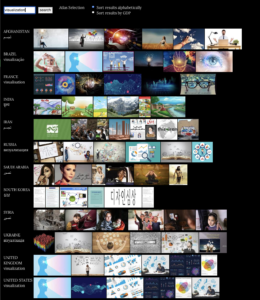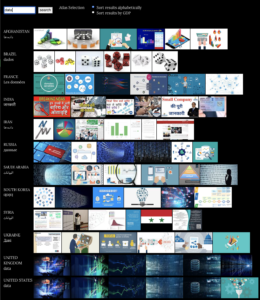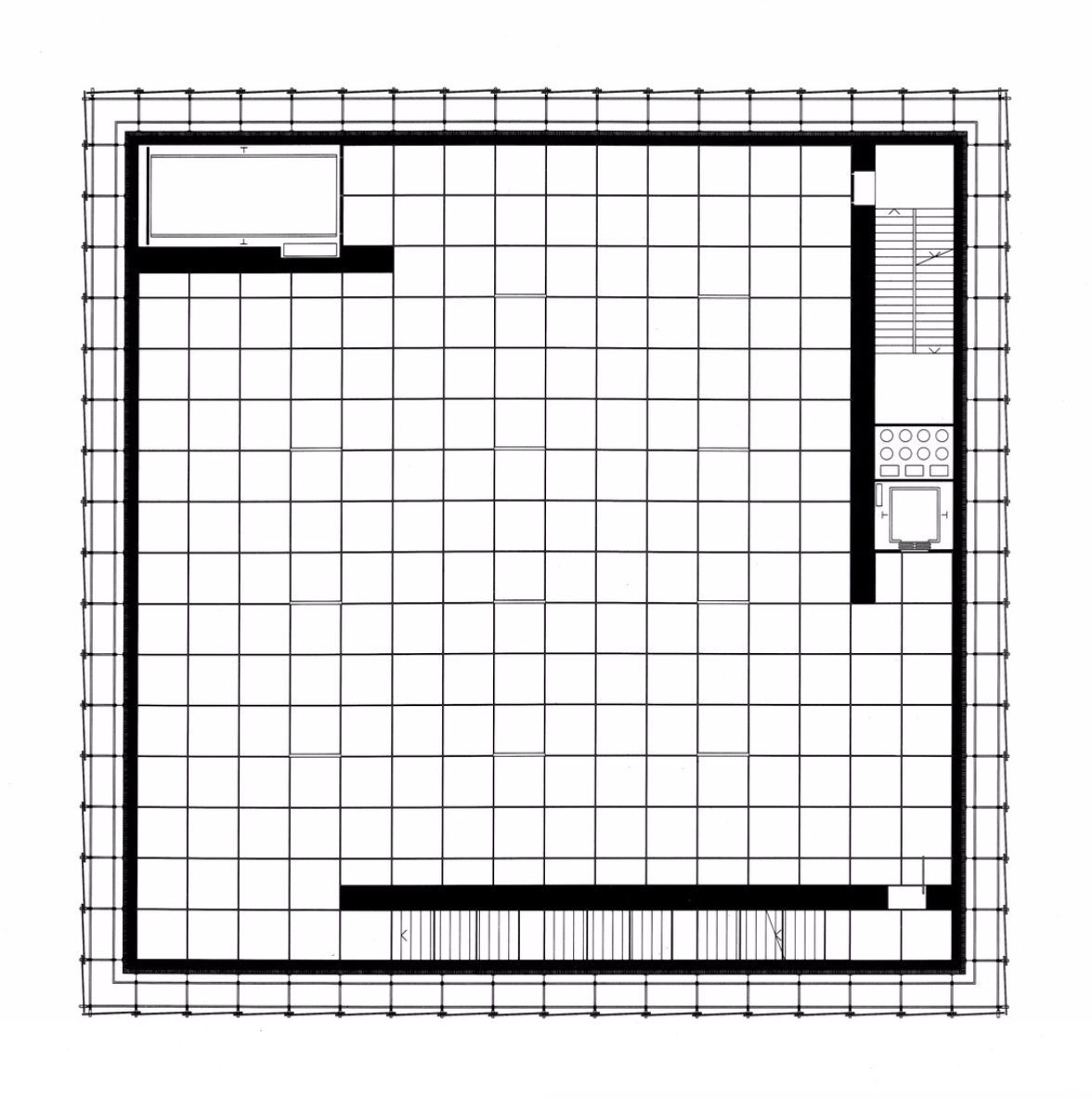OPEN ASSEMBLY
Experiments in Aesthetics and Politics









































Tabulating Visuality: Data and the Criminalized Subject
On December 4, 2020, Brian Jordan Jefferson, Associate Professor of Geography and Geographic Information Science at the University of Illinois will give a lecture as part of the West Hollywood Aesthetics and Politics (WHAP!) series. The lecture will be streamed live and throughout the evening comments and questions from attendees will be collected and introduced into critical conversation. The Fall 2020 Lecture Series, “Black Out: On the Surveillance of Blackness,” is presented by the CalArts Aesthetics and Politics MA Program and the West Hollywood Public Library. The lecture will be held virtually at 4:30 PST and can be viewed live here.
Introduction
Central to understanding how data is implicated in the process of surveillance and carceral punishment is understanding how data is in-and-of itself complicit in producing criminally racialized subjects. Brian Jordan Jefferson calls attention to how criminal justice databases are constructed by considering how the integration of information technology in policing has only bolstered correctional supervision and racial profiling. Carceral spaces are now created “by machines that traverse human anatomy, public housing facilities, public schools, transportation systems, telecommunications systems, and street networks in U.S. cities” that expand the range of data collected, he argues, without altering the racialized history of how it has been traditionally organized and explained.1 Underpinning this bias is how data distinguishes between bodies, especially how it assigns racialized meaning, usually rendering nonwhite bodies hypervisible. Moreover, the volume of data changes the scale of the decisions it makes possible – no longer individuals but whole populations of people. Offering insight into this new scale, Jefferson notes the volume of data collected, the Chicago Police Department having “millions of rows of data” and the New York Police Department having access to more than 33 billion public records, just a portion of all criminal justice data collected just in the US.2
This data is informed by the ways in which the criminalized subject has been historically visualized. Jefferson argues that the eruption of human tabulation into urban administrations was a major starting point in creating a national, centralized database on crime statistics. It was aided by electromechanical tabulation, which gave police departments a method with which they could analyze and document the “the social characteristics and dispositions of their arrestees.”3 Data aided by studies that tabulated anthropometrics, vital statistics, education, conjugal status and more, have spread through several disciplines and crystallized themselves historically, shifting the focus of scientific racism from biology to statistics.4
What often gets overlooked is how tabulation itself processes information by putting it in a table, requiring that information be structured and read in a certain way. This does not create conditions for absolute neutrality. The need for information to be structured necessitates the obscuring or highlighting of certain aspects of what is being recorded. And by having a predetermined conclusion, or even by having biased data in the first place, such frameworks perceive information actively even as they are said to factually read data as if it existed pre-structured within the bodies themselves.
Epidermal Thinking and Visual Presuppositions
In “Branding Blackness,” media theorist Simone Browne traces the historical significance of branding, the practice of marking the skin of chattel slaves at the ports of the transatlantic slave trade. She argues that it is a practice used to ascribe racialized meaning to bodies. And furthermore, that it is an early corporate biometric technology used to frame the black subject as commodity and perpetuate the enslaved body as black.5 As Browne writes:
“by making blackness visible as commodity and therefore sellable, branding was a dehumanizing process of classifying people into groupings, producing new racial identities that were tied to a system of exploitation.” 6
Branding, a “practice of punishment and accounting” marked these bodies as perceptible outside of spaces of enslavement, spaces where the body seeks to find itself outside of, and made it traceable.7
At the level of the skin, branding literalized epidermal thinking where sight and the racialized body were visually linked through visual symbol. It is in this way that surveillance technologies similarly produce a visual economy of race that can be traced and understood.8 Surveillance provides a system in which bodies are inputted, read, and quantified into either visible potential suspects or invisible innocent by-standers. Browne frames this parallelism between the act branding and surveillance with the term digital epidermalization; the exercise of power cast by the disembodied gaze of computational surveillance that predetermines “truth” about bodies and their identity, allowing the body to function as ‘evidence’ purely on the basis of visuality.
The link between the symbol and the body in branding is the image, and as Aria Dean posits, images are the primary mode through which civil society’s perception of blackness. For Dean, black people and black life has been built-up, established, and disseminated as blackness is made into an image, “ an image that precedes any subject’s self-identification with is as such the product of the European colonial imagination.”9 Like Browne, Dean articulates the abstraction and representation of black life in terms of the visual at the level of seeing. Nicholas Mirzoeff similarly theorizes visuality as more of a perceptual practice rather than a sensory one, revealing how it has been integral to the ordering and legitimization of history (especially as perceptible is linked to authority). The act of visualizing thus provides us with an interpretive framework under which things are historically constructed and understood by how they are made discernible.10 In more simple terms, the visual symbols of the black body as criminal have overshadowed how black bodies are seen in other contexts.
Image Atlas and the neutrality of data
Created in 2012 by Taryn Simon and programmer Aaron Swartz, Image Atlas investigates tabulated visuality. It does so by indexing top image results for terms inputted into search engines throughout the world. The subsequent image search results interrogate the possibility of a universally coherent visual language and the assumption of data neutrality. The viewer can refine or expand their searches to different countries, where the viewer can sort them alphabetically or even by Gross Domestic Product (GDP).11 After the tragic passing of Swartz, Simon has continued extending the range of countries included. While it started with 57, it now covers all 195 UN recognized countries.
On the surface, Image Atlas seems to reflect mass taste, cultural specificity, and reveal differences between visual languages. Underpinning the process of indexing, however, are cultural and political events that influence image-making that eventually result in visualization. Image Atlas essentially tabulates divergence. It does such tabulation in the act of ‘visualizing’. It does not tell but shows. And what it shows are a collective recording of the premeditated conceptions others have for things, and how they reflect in our data.

Screenshot of search results from ‘Image Atlas’ for the term “visualization”.

Screenshot of search results from ‘Image Atlas’ for the term “data”.
Why sort of things do the data reveal? By applying organizational logic to unmeasurable aspects of subjectivity, individuals are reduced to representations of culturally-embedded racialized histories in data form. And that form has real extra-digital repercussions. Data, of course, are not limited to one database but a myriad of networks of overlapping governmental and private sector surveillance enterprises. And the project’s own expanding scope mirrors how these networks have been rhizomatically growing together since the introduction of advanced technologies in crime prediction analytics and policing. The aesthetic consequences of digitization is the constant saturation of the hypervisible body is ambivalent. With more nuance, as images have proliferated, refined, and expanded, so have the ways in which nonwhite bodies are represented and visualized. This is often celebrated as a form of digital democratization. However it has also created an incorrigible system of surveillance that begs to be unraveled.
Turning Futility Into Criticality
Criminal justice data visualizations are sold as ways to empower and protect those who are often rendered invisible, however their success depends on the rigid surveillance of criminalized populations. This does not result in the eventual alleviation of these measures, but further justifies the extreme use and expansion of these systems. As Jefferson contends, the first step to combatting digitized criminalization is to politicize our understanding of how data is produced. We also have to consider why we are at this moment of confrontation; not only have these processes been concealed, often they are often hidden through the rapid mutation of their technological forms.
The digital affects practically every aspect of contemporary life. Questioning the carceral power of digital infrastructure is essential amidst the calls for deliberate anti-racist action following the ongoing protests against police brutality prompted by the murders of George Floyd, Breonna Tayolor, Daniel Prudem, and countless others. Additionally, the Covid-19 pandemic, that disproportionately affects Black and Latino communities, has brought about a sudden but massive move towards digital platforms. The future, both digital and literal, is perpetually marked by the entanglement of human life, data and governance.
Endnotes
- Jefferson, Brian. (2020). Digitize and Punish: Racial Criminalization in the Digital Age. Minneapolis; London: University of Minnesota Press.
- Jefferson.
- Jefferson.
- Jefferson.
- Browne, Simone. “B®anding Blackness: Biometric Technology and the Surveillance of Blackness” in Dark Matters : On the Surveillance of Blackness. Duke University Press, 2015.
- Browne.
- Browne, Simone. “Digital Epidermalization: Race, Identity and Biometrics.” Critical Sociology, vol. 36, no. 1, Jan. 2010, pp. 131–150, doi:10.1177/0896920509347144.
- Dean, Aria. “On the Black Generic.” NGV Triennial , 2017, www.ngv.vic.gov.au/exhibition_post/on-the-black-generic/.
- Mirzoeff, Nicholas. “The Right to Look.” Critical Inquiry, vol. 37, no. 3, 2011, pp. 473–496. JSTOR, www.jstor.org/stable/10.1086/659354.
- Simon, Taryn, and Aaron Swartz. Image Atlas, 2012, www.imageatlas.org/.
- Jefferson.
Featured Image “Who Are You Looking For?” by Irini Khenkin.
